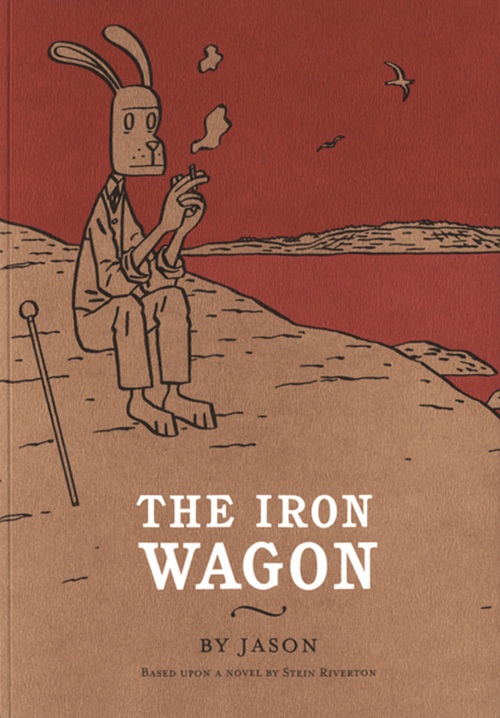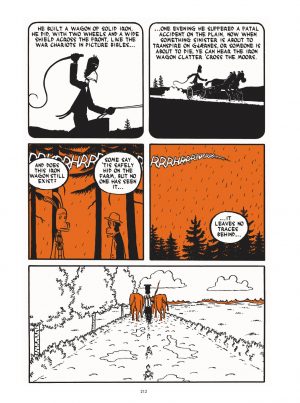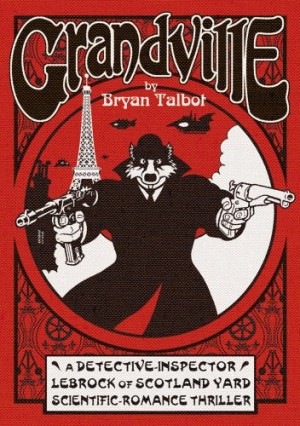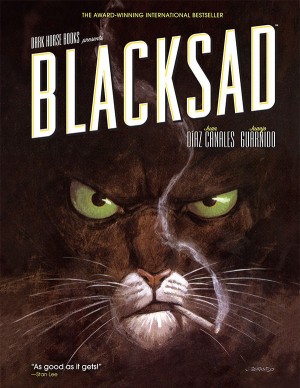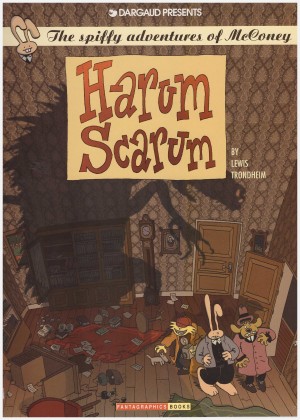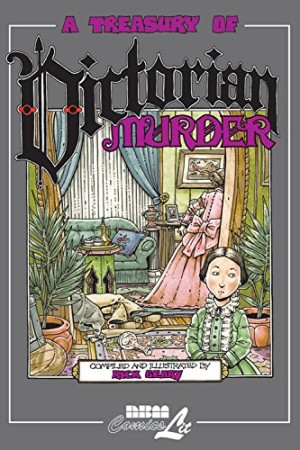Review by Frank Plowright
The Iron Wagon is an atypical Jason graphic novel. His cast of humanised animals are instantly recognisable, but what prompts consultation of the credits is the sheer word count. There are more words over a single page here than he usually uses in entire books. That’s because, chameleon that he is, Jason’s switched genres again, this time adapting a mystery novel by Stein Riverton set in turn of the 20th century Norway. As is the case with Jason, born John Arne Sæterøy, Riverton is an alias for journalist Sven Elvestad, but he betters Jason by that also being an alias for Kristoffer Elvestad Svensen. The Riverton Prize is still awarded annually for the best crime or thriller novel, giving an indication of how highly regarded he is in Norway.
A writer has left the capital intending to relax in the countryside, and is drawn to the Gjærnes mansion, to play the occasional game of chess with the owner, and to enjoy the company of his sister. When refused admission one night he learns of a former owner, an eccentric who built an iron chariot that he’d ride across the fields. He died in mysterious circumstances, and legend now has it that the distinctive squealing noise the chariot made is heard when someone is about to die, yet the chariot itself was lost.
One can see the attraction of the story to Jason. It has the formality about it that often characterises Jason’s own material, he enjoys drawing on the past, often setting his stories in some nebulous period of the early 20th century, and there’s also an eccentricity about the story, and a leisurely pace.
The plot plays out conversationally, hence the word count, with the detective taking the writer into his confidence as Riverton and Jason lay the groundwork for the novel’s big surprise. It’s a good one, but the more committed reader of crime novels could have it figured out before the revelation, not least for its later use by other crime writers, most famously Agatha Christie. There’s an appropriate amount of misdirection beforehand, and the use of the detective as a means of updating on the plot and motivations has an engaging subtlety about it.
What The Iron Wagon definitively displays is how adaptable Jason’s humanised animals are for telling stories, slotting right into this adaptation. It’s a technique also mastered, in a completely different style, by Lewis Trondheim. After a dozen pages it becomes irrelevant that the lead character is a rabbit, and the detective a cat, which certainly wasn’t the case in Riverton’s work. Here it’s an appropriate choice. Jason adds other definitive stamps also, illustrating in black, white, and a single other colour, here orange, which is dropped for flashback sequences, but works atmospherically otherwise.
The Iron Wagon has long been out of print, but is now collected along with two other of Jason’s more serious works in the hardcover compilation What I Did.
